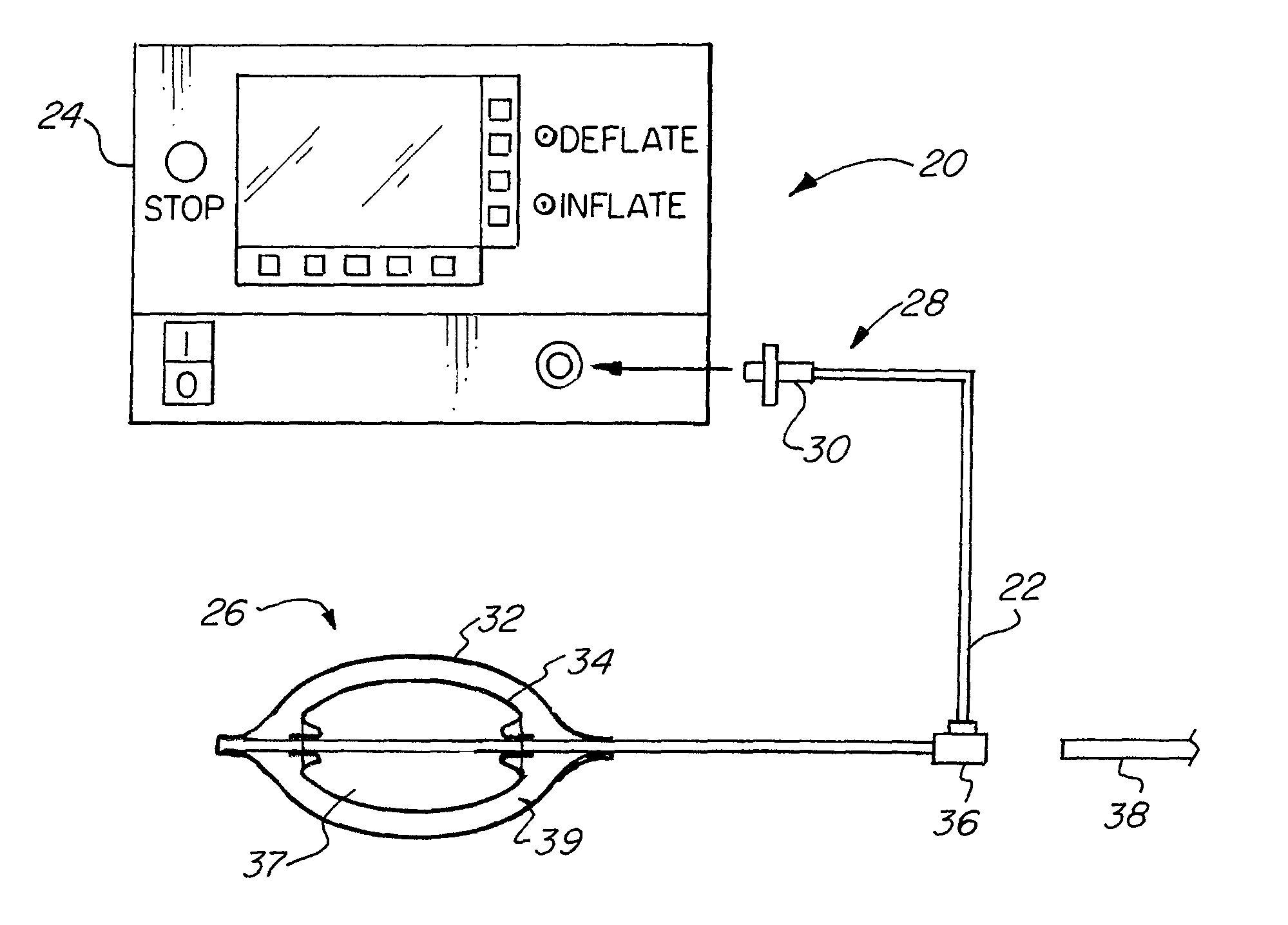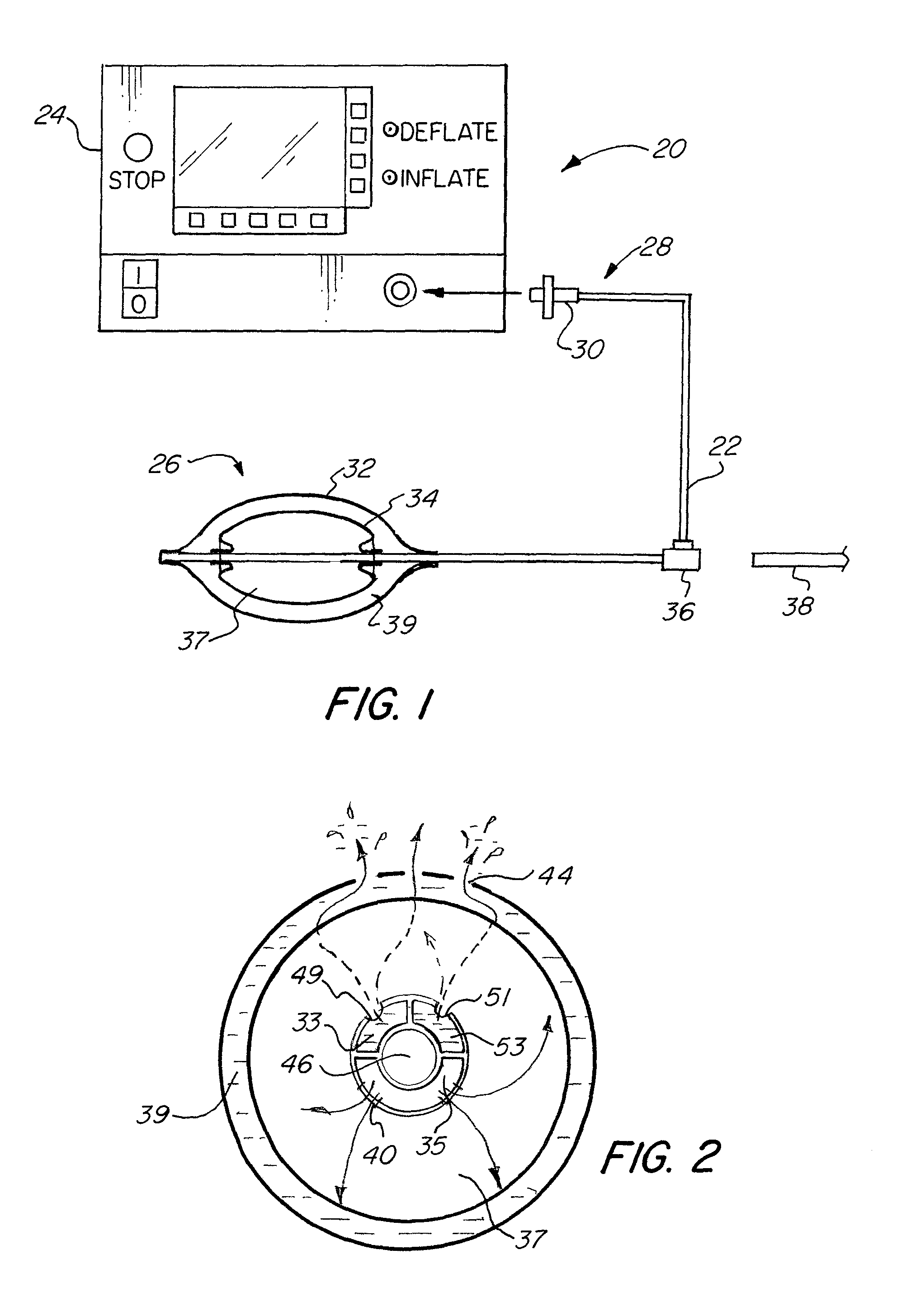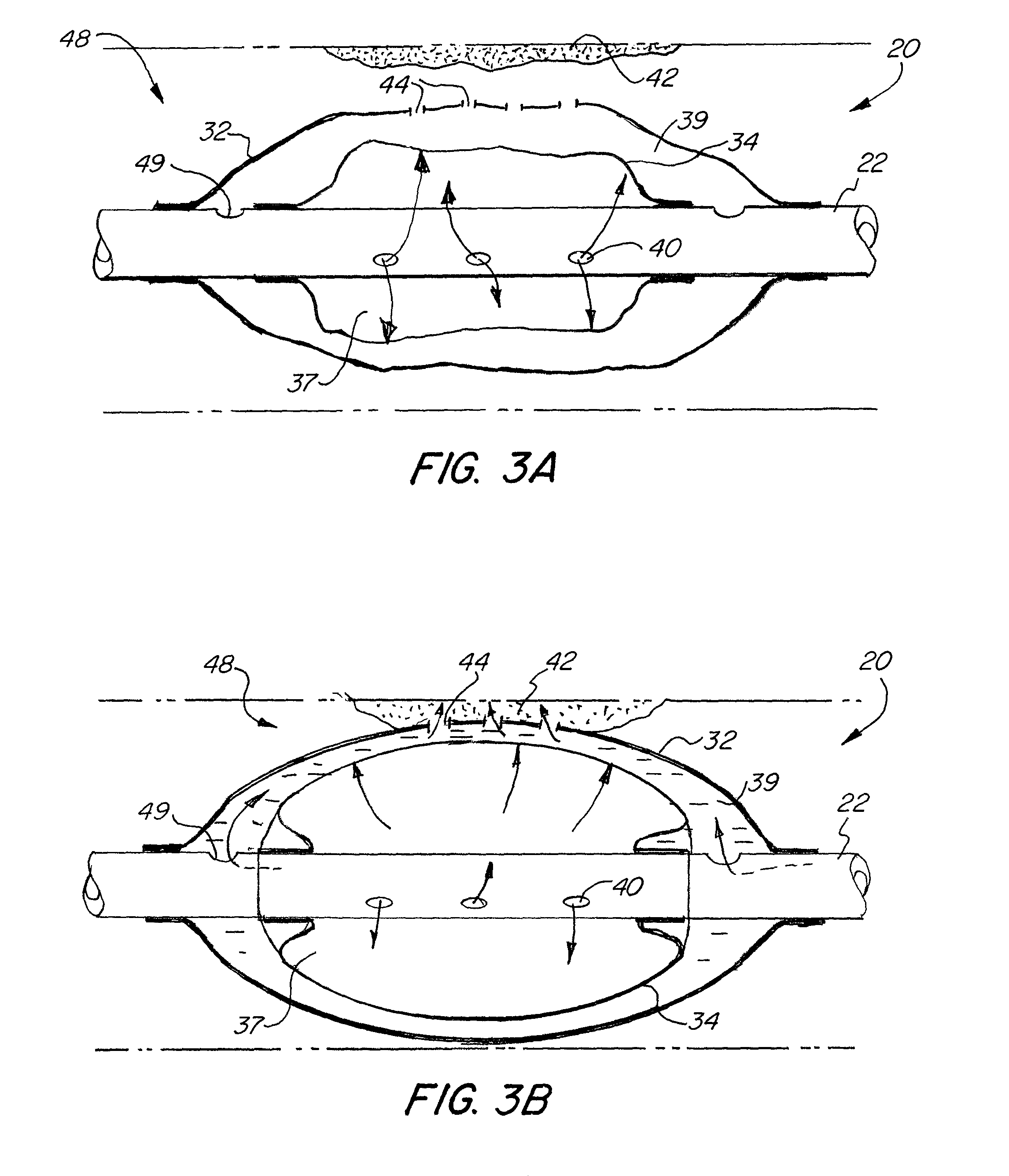Nested balloon catheter for localized drug delivery
a catheter and drug technology, applied in catheters, angiography, therapy, etc., can solve the problems of undesirable extravasation of diagnostic or therapeutic agents into tissue, many therapeutic and diagnostic many diagnostic and therapeutic agents in general may not be delivered using, etc., to facilitate the infusion of therapeutic and/or diagnostic agents
- Summary
- Abstract
- Description
- Claims
- Application Information
AI Technical Summary
Benefits of technology
Problems solved by technology
Method used
Image
Examples
Embodiment Construction
[0053]The basic components of one embodiment of a nested balloon catheter system in accordance with the invention are illustrated in FIG. 1. As used in the description, the terms “top,”“bottom,”“above,”“below,”“over,”“under,”“above,”“beneath,”“on top,”“underneath,”“up,”“down,”“upper,”“lower,”“front,”“rear,”“back,”“forward” and “backward” refer to the objects referenced when in the orientation illustrated in the drawings, which orientation is not necessary for achieving the objects of the invention.
[0054]As shown in FIG. 1, the nested balloon catheter system (20) includes a catheter (22) and a fluid source (24). The catheter (22) may have any suitable diameter and length depending on a particular application, and may be flexible, rigid or semi rigid. The catheter (22) may be made with any commercially available material that is flexible enough to allow the shaft to be safely inserted through the available opening of a bodily cavity such that it will bend instead of puncturing the wal...
PUM
 Login to View More
Login to View More Abstract
Description
Claims
Application Information
 Login to View More
Login to View More - R&D
- Intellectual Property
- Life Sciences
- Materials
- Tech Scout
- Unparalleled Data Quality
- Higher Quality Content
- 60% Fewer Hallucinations
Browse by: Latest US Patents, China's latest patents, Technical Efficacy Thesaurus, Application Domain, Technology Topic, Popular Technical Reports.
© 2025 PatSnap. All rights reserved.Legal|Privacy policy|Modern Slavery Act Transparency Statement|Sitemap|About US| Contact US: help@patsnap.com



